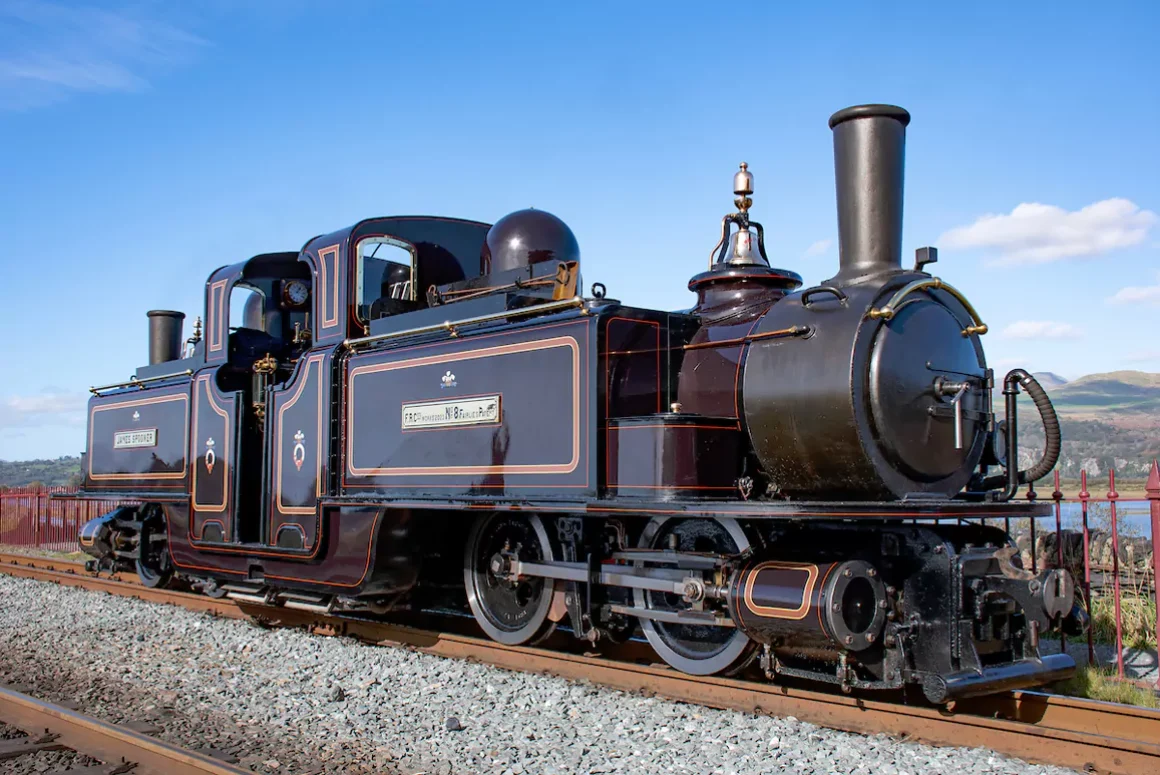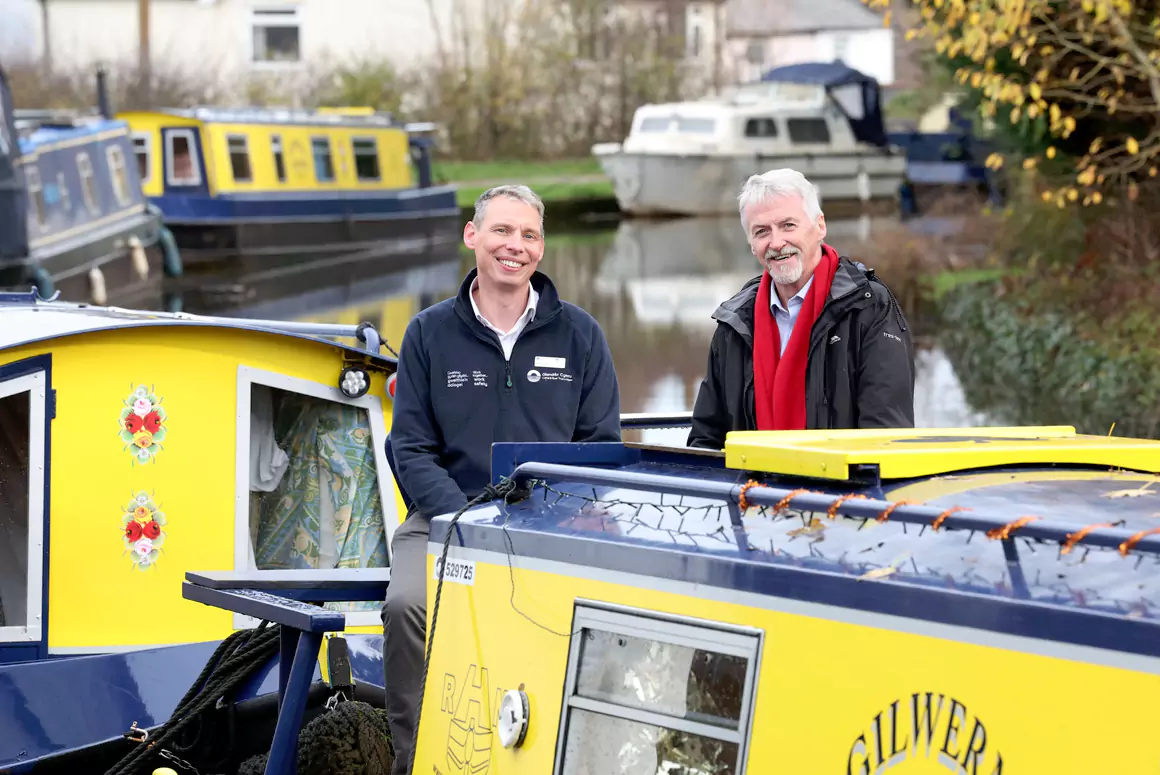On Friday October 20th, the newly-built locomotive James Spooner was officially named at Blaenau Ffestiniog Station by Liz Saville Roberts MP in the presence of one hundred and fifty invited guests, including pupils from Ysgol Maenofferen and Ysgol y Moelwyn who entertained the assembled guests with their singing.
James Spooner was built at the Ffestiniog and Welsh Highland Railways’ Boston Lodge Works over a period of eight years, and is the latest in a long line of locomotives constructed at the works. Boston lodge is in the unique position of having built new locomotives in three different centuries.
James Spooner will now enter service on the Ffestiniog Railway and form a trio of Boston Lodge built Double Fairlie locomotives alongside Merddin Emrys (built 1879) and David Lloyd George (Built 1993).
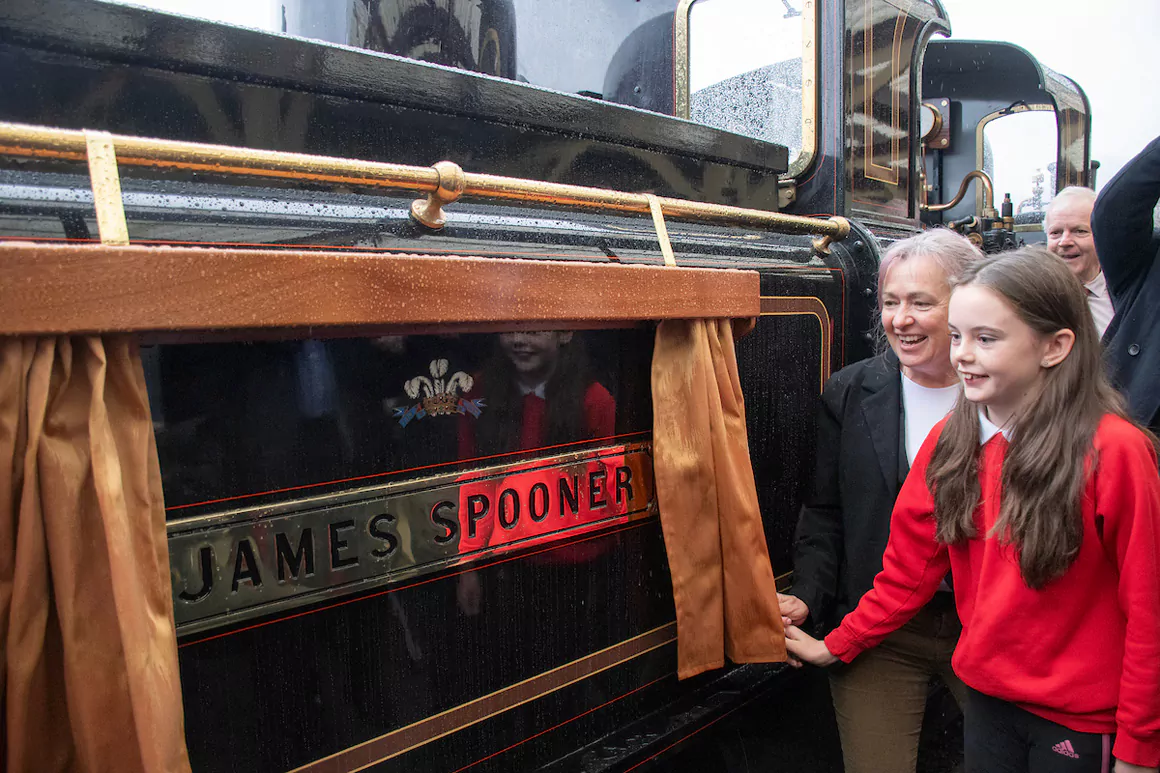
James Spooner – Background Information
The Ffestiniog Railway has always felt quite different from preserved railways. Often cited as being rather commercial it is not a preserved railway trying to recreate a certain era or scene. The company itself is still the original company founded in 1832 and looking forward to celebrating 200 years before too long. Brought back to life after nine years slumber in 1954 the focus then was on keeping the railway alive by operating as a tourist railway rather than preserving something. As time has passed the commercial strength of the railway has made it possible to focus on heritage alongside the day-to-day operations. Buildings and historic infrastructure have been saved as well as the mighty impressive collection of original rolling stock. In recent years locomotives once considered beyond saving are restored to service and long-lost items to needed to complete the collection recreated. Now the heritage of the line has become a key selling feature. Heritage and commercial operations are closely woven together and will become more so as a result of recent world heritage status granted to the slate industry of North Wales. The requirement for a new locomotive for the core commercial operation has resulted an interesting new machine reflecting the heritage of the railway whilst intending to deliver reliable steam traction.
General manager Paul Lewin maps the story of the journey to the re-launch of No8 James Spooner:
In 1872 when James Spooner was originally built it provided an answer to a commercial problem, namely hauling heavy trains on the Ffestiniog Railway and back then avoiding the requirement to ‘double’ the railway. In 2023 as the railway continues to fight modern economic challenges James Spooner re-emerges as part of the answer with the ability to haul long trains and importantly presenting a striking image, for the modern day railway that thrives by entertaining visitors.
It is important to understand that Fairlie locos can readily be split in to power units and the superstructure. Over the years practically all of the power units have given service under all of the different superstructures. It is interesting to note that the creation of new power bogies is rarely greeted with the level of interest that the arrival of a new superstructure creates. The FR of 50’s through to the 70’s made the most of the residual life in the power units from the old days of the company prior to closure. By the 1980’s a number of those units were so far gone that there was no real option but to withdraw them from service completely. One such pair, worn out after decades of use, are present at the NRM under the superstructure that carries the name ‘Livingston Thompson’. By 1986 a brand new pair of bogies were created thanks to the generosity of a sponsor (Mike Schumann, now the president of the railway). These initially saw service under Merddin Emrys when there was much amazement at just how good newly built units were compared to the very tired units the railway had become accustomed to. This excitement was short lived due to a boiler problem with Merddin, more on which will be said later in this article.
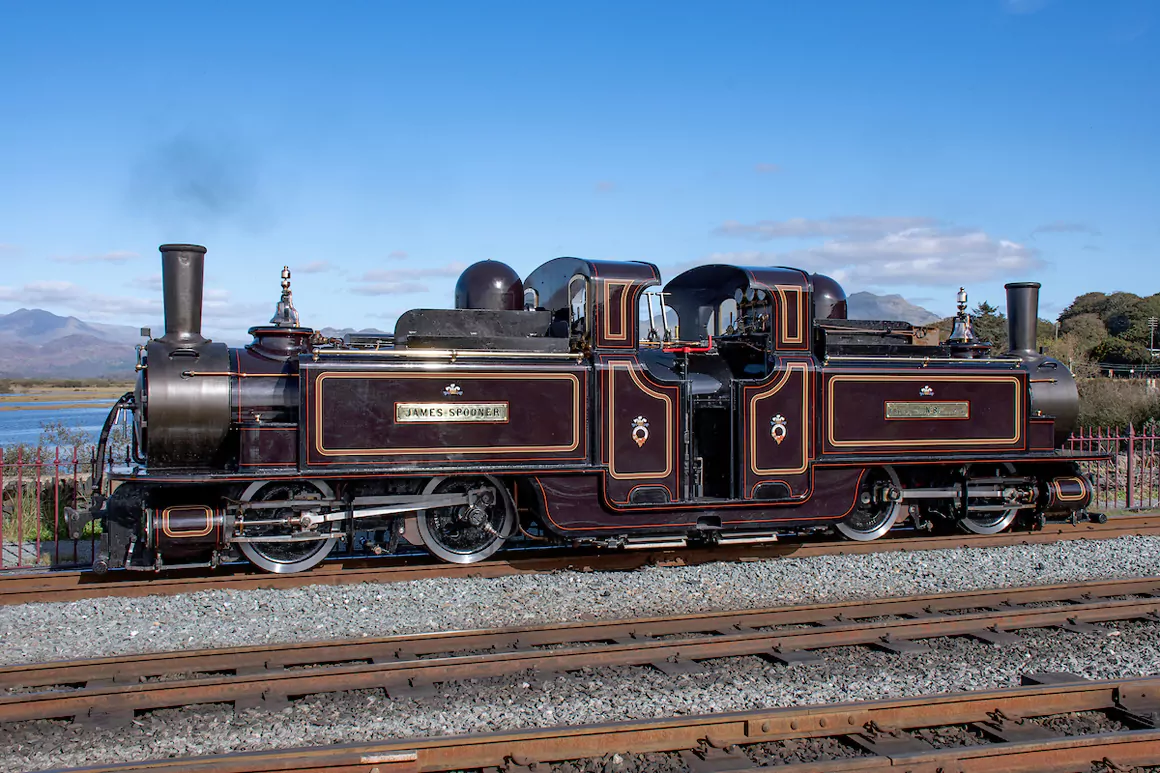
Since that time new power units have been built for all the operational fleet including the set with piston valves that currently reside below David Lloyd George. This conversion was tried on single Fairlie Taliesin which had suffered cylinder problems. The final set of power units that originated in the old company times last saw service some ten years ago, were replaced and now sit beneath the superstructure of withdrawn locomotive ‘Earl of Merioneth’. They are worthy of a little further comment as they were partly overhauled ready for use with the Earl of Merioneth which was launched in 1979. With resources so limited back then time simply ran out and the engine was needed in traffic. The top end bogie had been beefed up in certain areas but in a rather unbalanced way which saw stronger rods and crossheads but not the axle boxes and horns which immediately became the limiting factor. With no time to complete similar modifications, the bottom end bogie was given a quick overhaul and pressed in to service. Each unit had slightly different valve gear which was rather unsatisfactory. Although improved a little over time some problems continued until their withdrawal. They are in poor condition and whilst they could be overhauled once more there comes a time when clean new material if preferable in units expected to perform in demanding service conditions.
Turning to the locomotive superstructures these are seen as the main part of the locomotive and of course carry the names with which we are all so familiar. Two locomotives made it to the new era of the Ffestiniog Railway in 1954. These were Merddin Emrys of 1879 and Livingston Thompson of 1885 by now carrying the more popular name of Taliesin. Taliesin worked in its largely original format until the late 60’s however its name was again changed to Earl of Merioneth, one of the titles bestowed upon the late Duke of Edinburgh. Merddin was fitted with new tanks in the mid-sixties. Low cost, simply fabricated and frankly ugly tanks, which did little to reflect the historical outline of these locos. They did provide a workable machine capable of hauling large trains which was the prime concern at the time. With the demise of its ageing boiler in 1969 Earl of Merioneth was withdrawn ultimately to reside in the NRM carrying its original name of Livingston Thompson.
Around this time the subject of Fairlie boilers came to the fore. The two extant examples were thought to be life expired or about to become so. The FRCo called on the Hunslet engine company to provide a solution. With the benefit of hindsight we can see that design suggested, which was effectively two boilers of the type used by Linda and Blanche placed back to back, was in fact badly flawed. It took a decade or more however for this to become apparent by which time both boilers had been installed.
The first Hunslet boiler was fitted to Merddin Emrys in 1971 and ran for its first decade in service without any great issue. During this time the company decided to build a replacement locomotive which would carry the name Earl of Merioneth like the loco it aimed to replace. With limited resources the engine was built in a modern brutalist style. This arrangement aimed to carry sufficient fuel for a whole days work and water for a full round trip (neither of which delivered any great benefit). The result was a unique loco, only partially admired at the time of its launch. It has to said, ridiculed by some and viewed with an element of horror by some FR aficionados. The engine was not a success at first, it had poorly balanced wheels and abysmal steaming. Over time issues were resolved and the image softened. It became a high mileage reliable performer for two decades or more. It now has a very strong following from those that worked with it. It was effectively the first new build locomotive in preservation and became for many a Ffestiniog Railway icon.
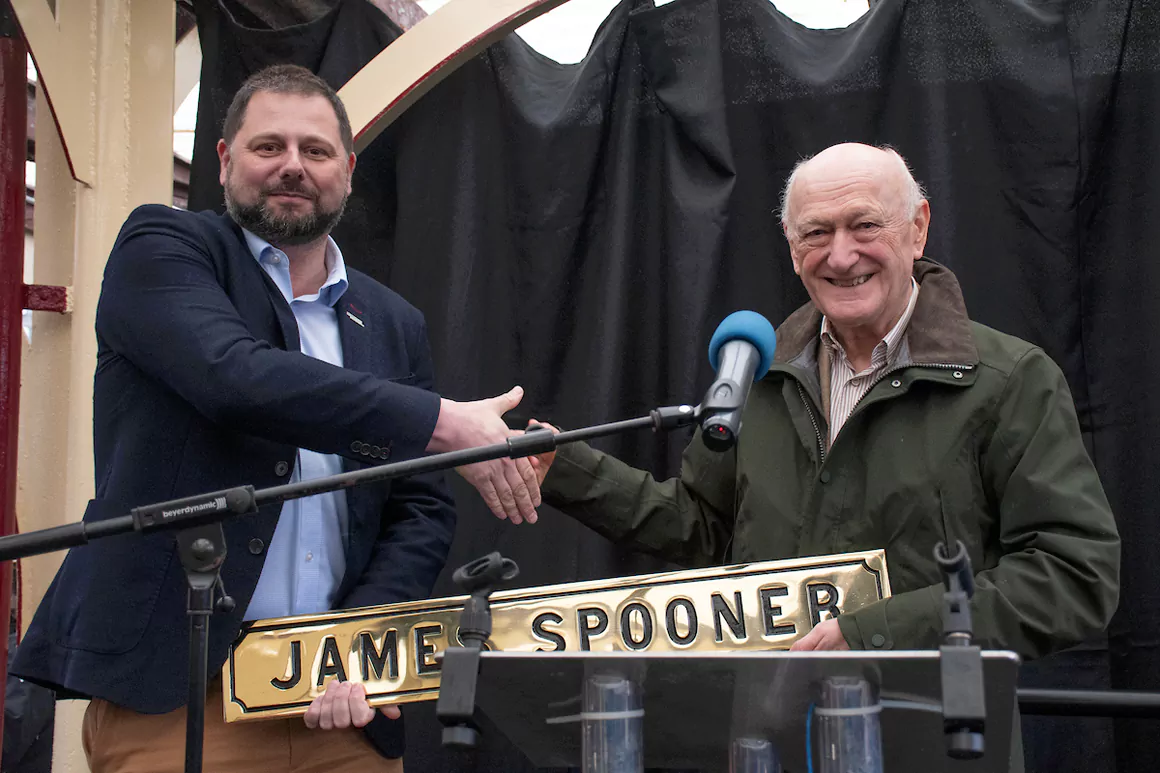
Reaction to the form of the Earl of Merioneth led to a plan to rebuild Merddin Emrys properly bringing back the original Fairlie outline to the Ffestiniog Railway. Blessed with strong financial support from a sponsor it took half the time of the rather protracted build of the Earl of Merioneth. Steps to get the correct shape including the addition of boiler lagging that made the shape of the boiler look externally like the ‘waggon top’ style boilers fitted to the original locos. It worked out well and Merddin is often referred to as original and best by loco crews.
The joy of the arrival of the reshaped Merddin was short lived. Arriving on shed one evening steam leaks from below the boiler cladding were found to emanating from serious cracks in the boiler throatplate. A plan to repair and add longitudinal stays meant both of this type of boiler would continue in service but require regular monitoring and repairs. This problem was to inform plans for the future of the Fairlie fleet, a future which would see new boilers planned which learnt lessons from both the immediate past and some generations beyond.
In 1992 a new Fairlie emerged with a new all welded boiler designed by Bob Meanley of Tyseley. This boiler had conical boiler barrel sections giving much more strength particularly around the throatplate areas. The tanks, cab and smokeboxes returned to the style of the 1890’s and resulted in a very presentable locomotive. Ironically this locomotive was first outshopped on the oldest and poorest power bogies in the fleet. None the less the locomotive proved economical and effective.
The new boiler design worked reasonably well but had persistent trouble with welded stays. In particular the crown stays over the firebox, which penetrated the outer wrapper at varying angles, have seen multiple repairs. Careful investigation revealed improved techniques for stay welding that could help, but during a ten year overhaul in 2023 the entire crown section of the outer wrapper was replaced. Whilst this feels like a major repair it has to be borne in mind that this ‘new’ boiler is in fact now 30 years old.
In 2015 a review of the Fairlie fleet and future needs was presented to the Ffestiniog Railway Company board. A new design for a boiler had been worked up that builds on the best features of all of the designs currently in use. By building a new boiler the risks associated with boiler failing in service would be reduced. This approach was thought preferable to further heavy repairs on both the Hunslet type boilers. The basic boiler bare of smokeboxes and superheater was expected to cost at least £120,000 a figure which would be exceed by quite some margin. The new boiler design came from the works staff and was approved British Engineering Services. This was quite a landmark for Boston Lodge who had previously tended to rely on external suppliers for design and supply of boilers.
At the same time as settling on a new boiler the subject of how to deal with the superstructure of the Earl of Merioneth came in to focus. This superstructure was showing its age. It had been heavily repaired and modified in 2006 to become the first coal fired double engine conversion after years of using oil fuel. Modern engineering techniques mean that it is sometimes easier to build new tanks and cab etc rather than repair the old ones. Having once accepted this the knock on effect was that the 1979 superstructure might be consigned to a skip. It also becomes clear that the new superstructure does not have to follow the same design of that which it replaces. A whole range of choices emerge as a result.
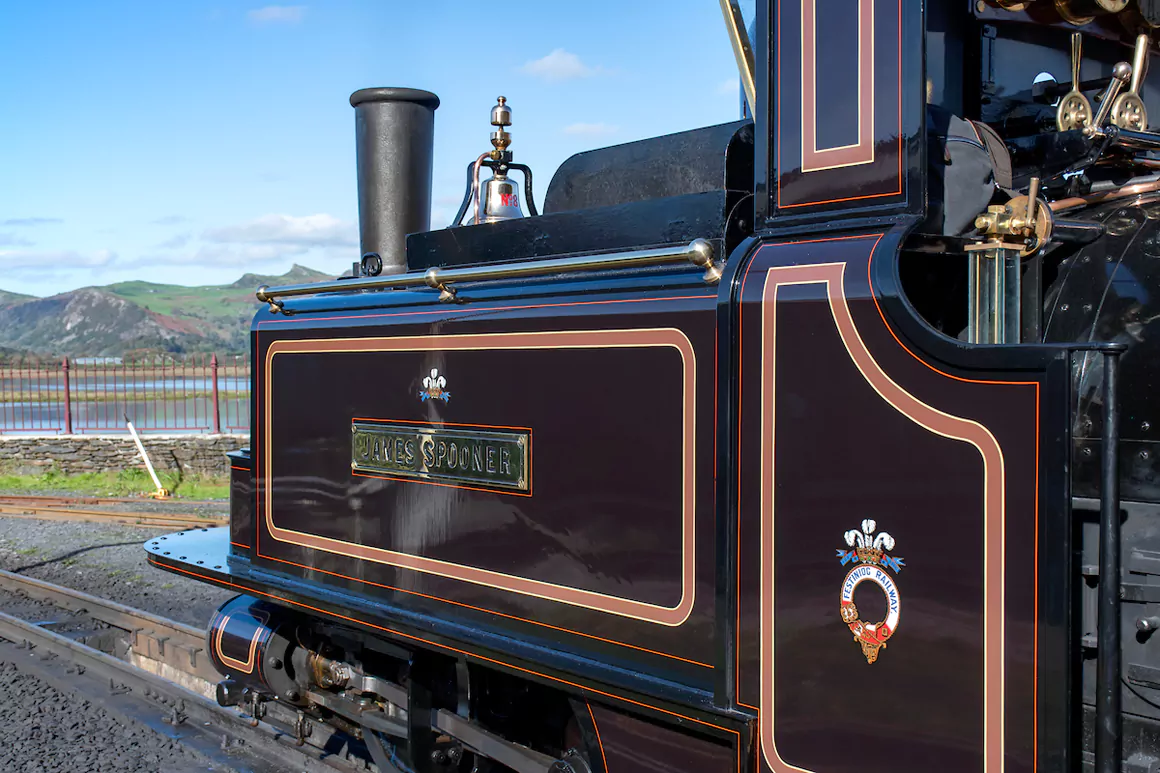
The board felt that a design that reflected the early shapes of Ffestiniog Railway double engines would be the best route forward. It was hard to imagine a modern design succeeding. It was also felt that our future success revolved around representing our history and also presenting a striking image for marketing purposes. Equally there was a strong feeling that Earl of Merioneth of 1979 was important in its own right because, as previously mentioned, it was the first new build of the preservation era. The result was the decision to build new and to keep the Earl of Merioneth complete until such time as a case for its restoration is made.
James Spooner was the engineer that planned the Ffestiniog Railway and its first manager back in the 1830’s. Locomotive No8, the second FR double Fairlie which entered service in 1872 was named after him. The loco ran until 1928 and was cut up by 1935. This left a gap in the FR numbering scheme and now in 2023 loco No8 along with the name James Spooner will once more be present in the operating fleet.
The team working on the design of the locomotive were heavily influenced by the images of the various early stages of double Fairlie design captured in the photos in the company archive. The result is a locomotive fit for modern day use, not a replica of a previous machine but reflecting key features of them. With the later style of these locomotive well represented in the modern day locomotives reflecting the earlier locos seemed fitting.
James Spooner features rather attractive stovepipe chimneys suggesting power and purpose. It also carries bells to the design created for the early FR locos. (Although bells are thought to have been cast for all the FR locos in the 1870’s it is not at all clear if they were ever fitted to the smaller engines. Two examples survive in the company archive which provided the inspiration and the starting point for creating new ones).
The engine carries the same Victorian Plum livery carried by Welsh Pony and ornately lined to match well with the original 1870’s carriages in the FR fleet. This livery evolved from a temporary unlined finish applied to Welsh Pony, a colour which was then lined in a gold and straw colours but to a pattern applied to sister loco ‘Little Giant’ in its 1860’s works photo. Originally a temporary arrangement the livery was so popular with members that requests were made for it to be varnished and kept. This was duly done and the scheme chosen for the initial outshopping of James Spooner. This brings the delightful prospect of two matching FR fleet locos working together, two locos which ten years ago would ever have been in prospect as returning to operation.
For further information please contact:
Chris Parry, Marketing Officer
Ffestiniog & Welsh Highland Railways
Tel: 07774 109788
Email: cparry@ffwhr.com


